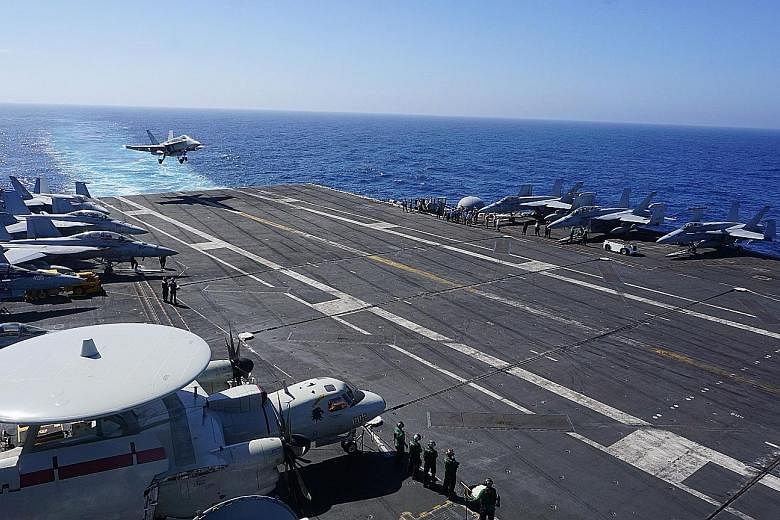HONG KONG/HANOI • The visit of a United States aircraft carrier to Vietnam for the first time since the end of the Vietnam War is a powerful symbol of the growing strategic ties between the former foes.
But the arrival of the USS Carl Vinson today also illustrates Hanoi's complex relationship with Beijing over the disputed South China Sea.
For months now, Vietnamese envoys have been working to ease the concerns of their giant Chinese neighbour over the visit and the prospect of broader security cooperation between Hanoi and Washington, according to diplomats and others familiar with discussions.
Vietnamese diplomats and military officers have repeatedly stressed the country's independent foreign policy and its desire for broad foreign relations - hoping to maintain stable ties with China while standing up to it over the South China Sea, the sources said.
The Vinson will mark the biggest US military presence in the Asian country since 1975 when it berths in Danang for a five-day stay.
The port city on Vietnam's central coast is close to its Blue Whale gas field now being developed by US oil major Exxon Mobil, as well as the increasingly fortified Paracel islands, which China occupies and Vietnam also claims.
China's rapid construction and build-up of the seven features it holds in the disputed Spratly group farther south has alarmed Vietnam and other regional governments. As it seeks to enforce its claims to much of the South China Sea, China's navy and coast guard routinely patrol swathes of the area via which some US$3 trillion (S$3.96 trillion) in trade passes annually.
While some Chinese commentators have used the Vinson's presence to demand an even greater Chinese military build-up in the waterway, official reaction from Beijing has been relatively muted since the stop was confirmed in January.
US carriers frequently ply the South China Sea as part of a rising pattern of naval deployments, and are now routinely shadowed by Chinese naval vessels, regional naval officers say.
"Even as it moves forward with the US, Vietnam has been engaging China over South China Sea tensions," said Mr Le Hong Hiep, a Vietnam expert at Singapore's ISEAS - Yusof Ishak Institute.
"They might be irritated but gradualism is the key word here... Vietnam will embrace the US only at a pace that doesn't cause an overreaction from China."
Dr Zhang Baohui, a mainland security expert at Hong Kong Lingnan University, said he believed Beijing would not be panicked by the visit, in part due to quiet but successful Vietnamese diplomacy. "Beijing has a much better understanding of Vietnam's balancing formula now," he said.
REUTERS

